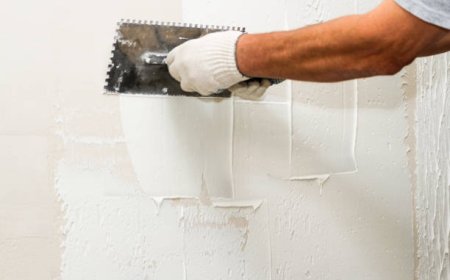The Importance of Topographic Survey Services for Mapping the Land Right

Before any construction, development, or land modification takes place, understanding the exact shape and features of the land is crucial. Thats where topographic survey services come into play. These surveys provide detailed and accurate information about the lands natural and man-made features, including elevations, slopes, trees, buildings, utilities, and drainage patterns.
For property developers, architects, engineers, and government bodies, topographic surveys are the foundation upon which safe and efficient designs are built. They help prevent costly mistakes, reduce risks, and ensure that projects are executed smoothly. With the advancement of technology, modern topographic surveys use drones, GPS, laser scanning, and other advanced tools to deliver highly accurate data faster than ever before.
In this article, we will explore why topographic survey services solution is so important, and how they play a key role in successful land development, construction projects, and long-term land management.
1. Accurate Land Measurement and Planning
One of the primary benefits of topographic surveys is their ability to measure land accurately. Unlike general property surveys, which focus mainly on boundary lines, topographic surveys capture the exact contours, elevations, and features of the land.
This accurate data allows architects and engineers to design structures that fit the lands shape, avoiding unnecessary grading or excavation. Knowing the precise elevations also helps plan for drainage, utility installations, and foundation design, reducing the risk of costly design changes later.
2. Prevents Costly Construction Errors
Mistakes in land measurement can lead to major problems during construction, such as unstable foundations, improper drainage, or violations of local building codes. Topographic surveys help eliminate these risks by providing detailed information before any work begins.
By identifying potential challenges early onlike steep slopes, low-lying areas, or underground utilitiescontractors can plan accordingly. This proactive approach saves both time and money, helping projects stay on schedule and within budget.
3. Supports Effective Drainage and Flood Prevention
Proper drainage is a critical aspect of any construction project. Topographic surveys map the lands slope and elevation, making it possible to design systems that direct water flow away from structures.
Without this data, poorly designed drainage systems can lead to flooding, soil erosion, and long-term damage to buildings. Topographic surveys ensure that stormwater is managed effectively, protecting both the property and the surrounding environment.
4. Essential for Road and Infrastructure Design
Whether building roads, bridges, or utility networks, understanding the lands topography is essential for safe and efficient design. Topographic surveys provide the necessary data to determine the best routes, minimize grading costs, and ensure long-term stability.
For public infrastructure projects, accurate surveys are often required by law to ensure safety and compliance with regulations. Without this information, infrastructure projects risk delays, safety hazards, and higher costs.
5. Facilitates Environmental Protection
Topographic surveys help identify natural features like wetlands, water bodies, forests, and protected habitats that must be preserved during development. By mapping these features, developers can create plans that minimize environmental impact and comply with environmental regulations.
Protecting these natural resources not only ensures legal compliance but also supports sustainable development practices that benefit the community and the ecosystem.
6. Supports Property Valuation and Legal Disputes
In real estate transactions, accurate land data can influence property value significantly. Topographic surveys provide buyers, sellers, and appraisers with detailed information about the lands usable area, buildable portions, and unique features.
In cases of boundary disputes or legal issues, topographic surveys serve as valuable evidence in court. They offer precise measurements that can help resolve disagreements about property lines, easements, or encroachments.
7. Improves Communication Among Project Teams
Topographic surveys create detailed visual maps that architects, engineers, contractors, and clients can easily reference throughout a project. These visual aids help teams communicate more effectively, ensuring everyone has a shared understanding of the sites conditions.
Clear, accurate maps reduce misunderstandings, minimize design conflicts, and allow for better coordination among team members. This improved communication results in smoother project execution from start to finish.
8. Assists in Utility Planning and Installation
Topographic surveys often include mapping of existing underground and overhead utilities such as water lines, sewer systems, gas lines, and electrical cables. Knowing the exact location of these utilities is essential to avoid damaging them during construction.
Accurate utility mapping helps contractors plan safe excavation routes, prevents costly repairs, and ensures the uninterrupted operation of essential services during and after construction.
9. Supports Future Land Development and Maintenance
A detailed topographic survey serves as a permanent record of the land's original condition before development. This information is valuable for future expansion, maintenance, or redevelopment projects.
For property owners, having an up-to-date survey can simplify future permitting processes, reduce survey costs for additional projects, and provide a clear understanding of the lands characteristics for decades to come.
10. Enables the Use of Advanced Technologies
Modern topographic surveys use cutting-edge technologies like drones, GPS, total stations, LiDAR, and 3D laser scanning to collect data quickly and accurately. These advanced methods improve survey precision, reduce human error, and speed up project timelines.
The use of advanced technology also allows for the creation of digital models that can be integrated with design software like CAD or BIM, streamlining the design process and improving project visualization.
Topographic survey services play a vital role in every stage of land development, from initial planning to final construction. They provide detailed, accurate information that guides safe design, efficient construction, and long-term land management.
By investing in a professional topographic inspection survey, property owners, developers, and government agencies can prevent costly mistakes, protect the environment, and ensure their projects comply with legal and safety standards. The detailed data gathered through topographic surveys supports better decision-making, reduces risks, and helps transform complex projects into successful developments.
In a world where land use becomes increasingly complex, topographic surveys are not just helpfulthey are essential. Whether you're building a home, designing a highway, or developing an entire community, starting with an accurate understanding of the land ensures your project is built on a solid foundation.




































